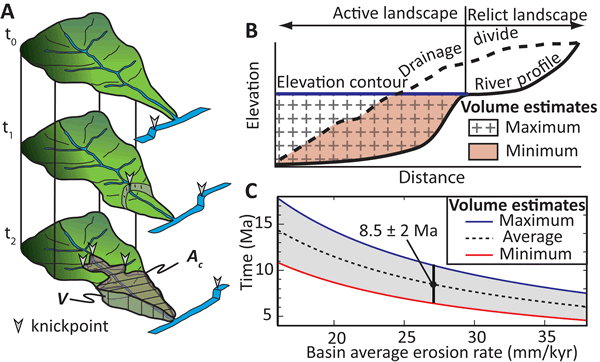
Figure 4.
Conceptual model and results of volume-for-time substitutions. (A) Cartoon illustrating the idealized evolution of a drainage basin experiencing base-level lowering brought on by the propagation of a knickpoint as a kinematic wave. The final time step (t2) identifies the volume of eroded material (V) and area of the active landscape (Ac), which are the parameters used to calculate the time since a knickpoint entered the mouth of a drainage basin using equation 2. (B) Schematic cross section illustrating the two methods used to estimate “missing” volume below the elevation of the highest trunk channel knickpoint. (C) Plot of the estimated time since the Highland Falls knickpoint entered the mouth of the Cullasaja River basin. The vertical black line is the mean basin average erosion rate determined for the active portion of the Cullasaja River basin predicted by the Ahnert (1970) trend (27 ± 11 mm kyr−1) and matches that of the nearby Great Smokey Mountains (Matmon et al., 2003; 27 ± 4 mm kyr−1).